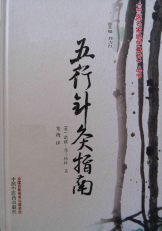
主要责任者: (英)弗兰格林
责任方式: 著
出版者: 中国中医药出版社
出版地: 北京
字数: 131 千字
页码: 1-228
开本: 32
中图分类号: R245-62
语种:中
定价:25.00
出版时间:2014-07
丛书多卷书否:是
丛书名:中医名家绝学真传丛书
书目简介:本册工具书是中医名家绝学真传丛书之一,共收录46条词条。
| 词条 | 五行针灸指南:增补修订本 |
| 类别 | 中文百科知识 |
| 释义 |  主要责任者: (英)弗兰格林 责任方式: 著 出版者: 中国中医药出版社 出版地: 北京 字数: 131 千字 页码: 1-228 开本: 32 中图分类号: R245-62 语种:中 定价:25.00 出版时间:2014-07 丛书多卷书否:是 丛书名:中医名家绝学真传丛书 书目简介:本册工具书是中医名家绝学真传丛书之一,共收录46条词条。 |
| 随便看 |
开放百科全书收录579518条英语、德语、日语等多语种百科知识,基本涵盖了大多数领域的百科知识,是一部内容自由、开放的电子版国际百科全书。